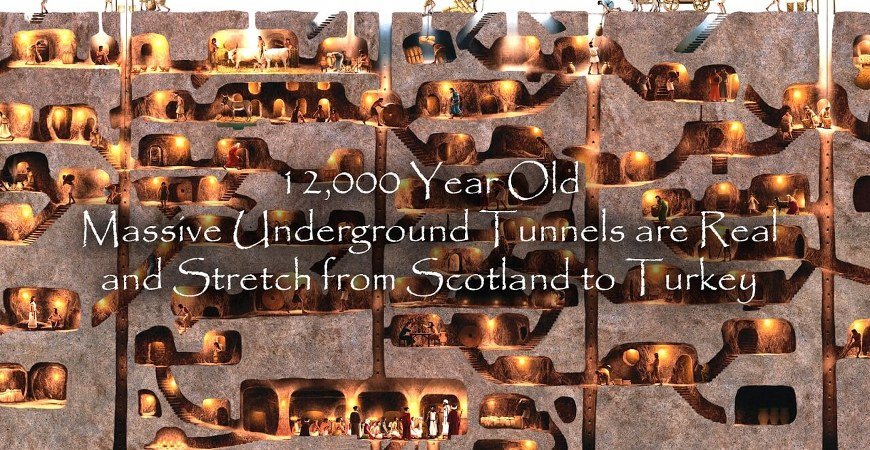
Kaymakli and Derinkuyu Underground Cities of Cappadocia
Kaymakli and Derinkuyu Underground Cities of Cappadocia,
The environment of Derinkuyu consists of a level ground but in the town center, these are a stream coming from Kaymakli-Derinkuyu direction. This stream is about 50-60 meters wide, and 8 km long and is in a completely full state. And I think that a part of the excavation poured of the underground city was poured to the bottom of the South Stream peak at the west side of Derinkuyu, and the other part was poured into the stream coming from the Kaymakli direction. If it would have been piled up at another place, these diggings would have made a great hill, but there is no hill resembling a pile of diggings in this region. On the other hand, if we suppose that the excavation was spread throughout the land, the soil of this region would have been sterile, non-productive, and sandy but there is no region having such soil. This region possesses a complete productive agricultural land. Undoubtedly mankind is able to do anything. But what forced the people of that time to leave the world’s surface and construct the Underground Cities which are so difficult to make? In general, if we consider the Underground Cities, we can see that these cities were constructed over a leveled ground or a hill’s side. Tribes felt the necessity of continuous shelters to protect themselves from all kinds of danger. The reason these tribes preferred the region of Cappadocia was because it was easy to dig this region since it consisted of tuff and soft rock. As a matter of fact, they could not make these cities with the technique of that period if the rocks were not soft. Basically, these rocks are very soft. They harden at the contact of air. If we examine carefully, we can see that there is a difference between the first layers and the last layers and that there are differences in some of the air chimneys. One can see that the upper layers and some of the air chimneys got rougher and that they were made at random and that there are no traces of drills. It is also visible that lower layers and other air chimneys are softer and even certain parts can be dug, easily they did not get much harder, the traces of drills are still very clear and the chimneys are very smooth and that some of these are round and others square. In 1910, an Englishman R. Campbell Thomson, found things such as rocks, and hand axes belonging to the Paleolithic Age in the Soganli stream 26kms. far from Derinkuyu. Since the underground cities are in this region, the first layers above of these cities belong to the Paleolithic Age? This has not been proven so far. But a church in the form of a cross was found in the 7th layer of this underground city at Derinkuyu District, and the first layers were dug later, and a missionary school and a place of Baptism was made. Thus, this is the absolute proof that Romans and Byzantines resided here After Christ. The ventilation system of the underground cities was very proper.